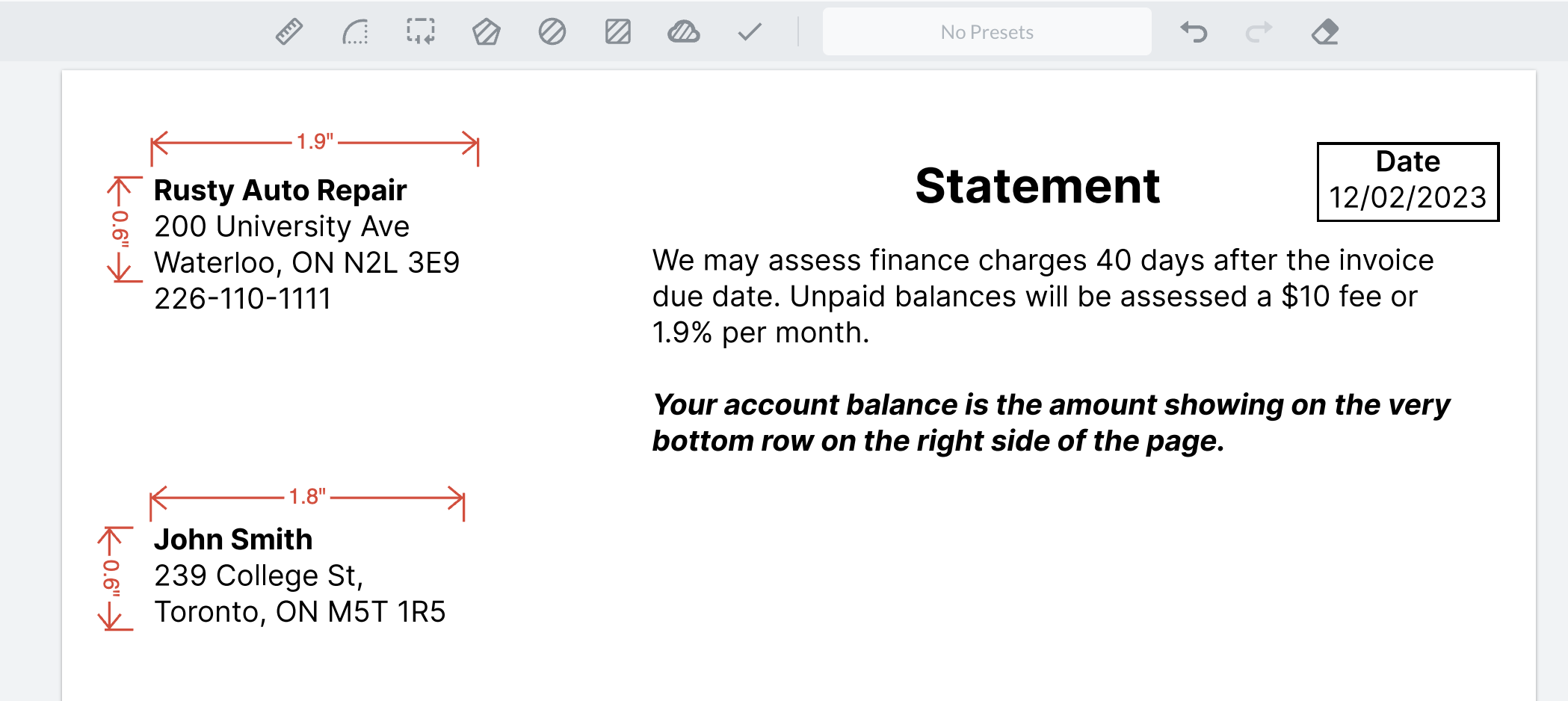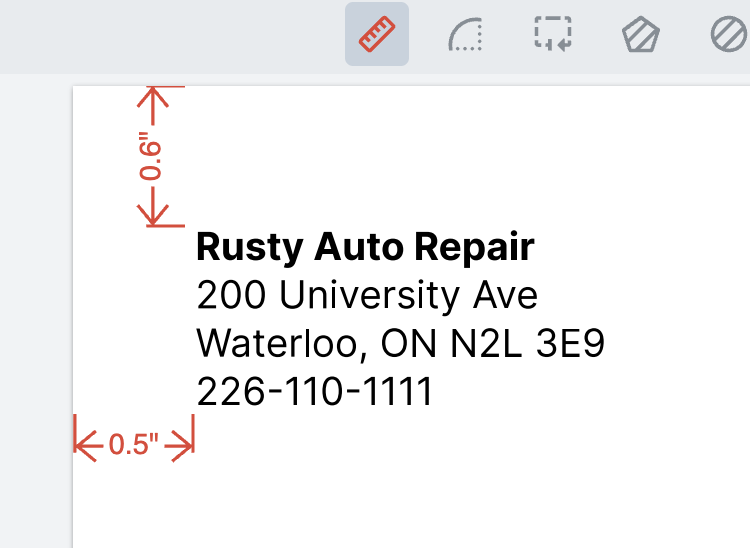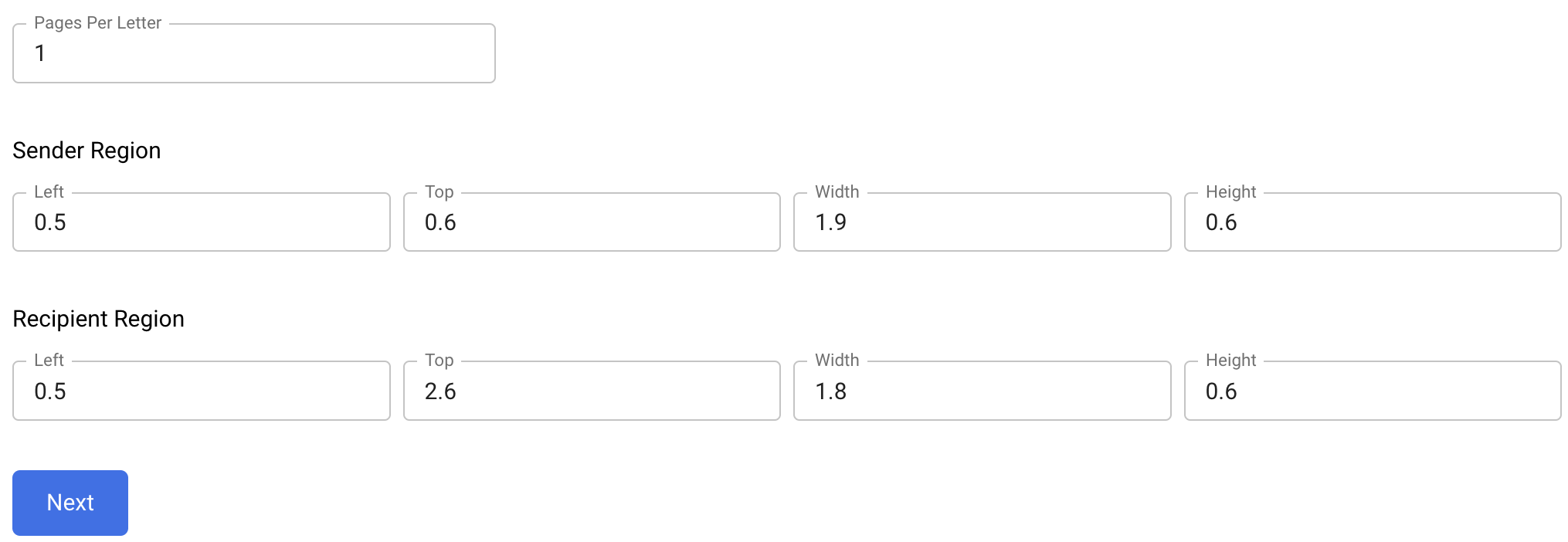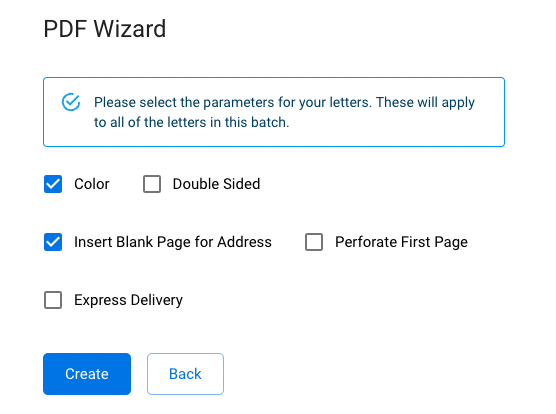Overview
PostGrid's PDF Wizard feature allows you to mail letters without going through each letter to identify the sender and recipients mail addresses.
Such a feature is particularly beneficial when dealing with large mail-outs, as it eliminates the need to manually sift through each letter to get the addresses. By leveraging the PDF Wizard, you can significantly reduce your preparation time and enhance your mailing process efficiency.
Using the PDF Wizard feature
Using the PDF Wizard feature consists of 3 steps:
- Uploading files onto the PDF Wizard: This involves adding the PDF files to be mailed. The files should have a consistent format regarding the placement of sender and recipient addresses.
- Specifying address regions on the PDF using the PDF Viewer tool: After uploading the files, you need to define the areas on the page where the sender's and recipient's addresses are located. You can use the PDF Viewer's ruler tool to measure the width, height, and placement of these address boxes from the edges of the page.
- Reviewing information and mailing letters: After defining address regions, the PDF Wizard extracts the addresses. You can then review these details and ensure their accuracy. Once verified, you can add customizations to the letters, such as color print or inserting a blank page, and then click "Create" to send out the letters
Step 1. Uploading files onto the PDF Wizard
Start by launching the PDF Wizard from your PostGrid Dashboard. Here, you'll find a box designed for uploading your files. You can either click on this box to select your files or directly drag and drop them into it.
Keep in mind, the PDF files should follow a similar format, specifically with the placement of sender and receiver addresses for optimal operation.
In addition to the drag and drop box, you will also find a PDF viewer tool, an input box to specify the number of pages per letter, and the input boxes to specify the sender and recipient's address regions.
Step 2.Specifying address regions on the PDF using the PDF Viewer tool
With your files uploaded, the next step involves pinpointing the areas on the paper that contain the sender's and recipient's addresses. This is achieved by setting the width and height of these areas (in inches), as well as their distance from the top and left edges of the page.
Follow these instructions to capture these measurements:
- Access the PDF Viewer toolkit, located just beneath the file upload box. Choose one of your PDFs to start measuring. The viewer will prompt you to calibrate your measurement scale for accuracy (typically a 1:1 ratio for on-screen inches to paper inches).
- Click on the ruler icon on the PDF Viewer's top bar to activate the ruler tool.

While holding shift, use your mouse to draw a straight line on the document to measure the required distances.
The necessary measurements include:
- The sender's and receiver's address box dimensions (width and height). In the example given, the sender and recipient's address region might be 1.9 x 0.6 inches for the sender and 1.8 x 0..6 inches for the recipient.

- The distance from the top and left edge to each address box. In the example given, the sender's address box region is about 0.5 inches from the left edge of the paper and 0.6 inches from the top edge:

Similarly, the recipient's address region is 0.5 inches from the left edge of the paper and 2.6 inches from the top edge of the paper.
Record these measurements for input into the PDF Wizard's main page, along with the number of Pages Per Letter:

After entering the data, click 'Next' to move to Step 3.
Step 3. Reviewing information and sending mail
Having uploaded your PDF letters and defined the address regions, you can now review the data extracted by the PDF Wizard before sending your mail.
Upon completing Step 2 and clicking 'Next', you'll see the addresses and names of the sender and recipients, as extracted by the PDF Wizard.

Review this information carefully. If there are inaccuracies or extra details, double-check your measurements and ensure there's no additional information overlapping with the address region (like a phone number). Once satisfied with the information, click 'Next' to customize your letter.
Finally, apply any desired customizations to your letters, such as color printing or adding a blank page for the addresses. Click 'Create' to finalize and mail your letters.

